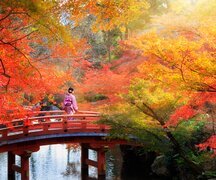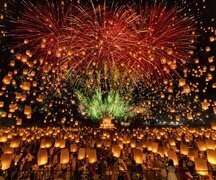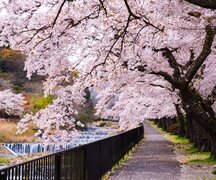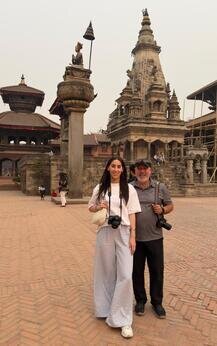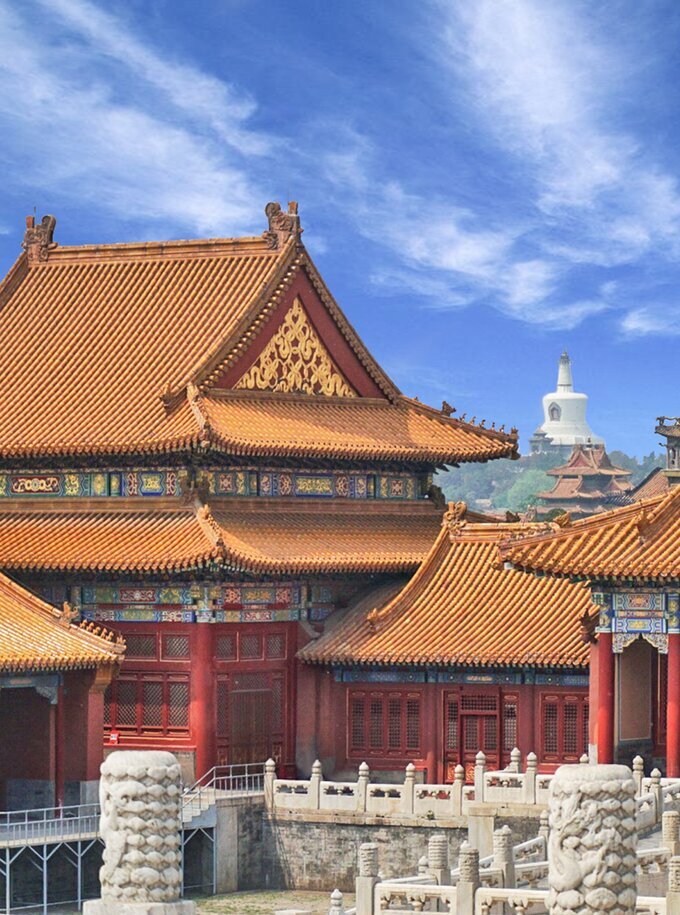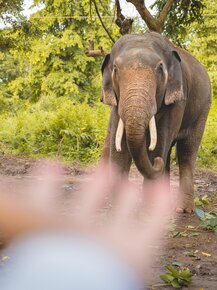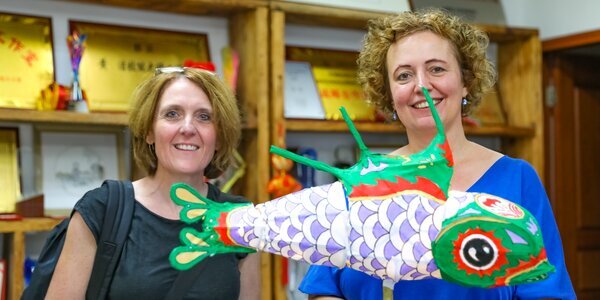Unlike Bangkok, Chiang Mai, nestled in northern Thailand, has cooler nights, mountain breezes, and a very special festival calendar. But it also has its challenges—like the smoky burning season that catches many first-timers by surprise. Here's my take on the best and worst times to go, based on years of inspection trips.
Best Times to Visit Chiang Mai

It is common to see that the best time to visit Chiang Mai is from November to January. Yes, at most times, but it really depends on what kind of experience you're after—cool weather, fewer crowds, or better prices.
Best Time for Comfortable Weather: November to Early February
If comfort is your top priority, November through January or early February is the best season to be in Chiang Mai. Mornings and evenings can dip to 13–15°C, afternoons warm up to a pleasant 26–28°C. The air feels crisp, the sky is clear, and rain is rare.
Do pack a light sweater or jacket. I was surprised by the evening chill when I joined the New Year countdown celebration on the outskirts of town—I even ended up wearing a light down jacket!
Yes, this is peak tourist season, so you may have to queue at famous temples like Wat Phra That Doi Suthep, but standing in line under crisp blue skies feels far more bearable than sweating under the March or April sun.
The real joy of this season is how easy everything feels: wandering the Old City without sweating, walking with elephants under the cool blue sky, exploring night markets at a relaxed pace, and savoring street food under crisp evening air. It's the kind of weather that makes you want to linger outside long after dinner.
For tips on managing crowds and costs, check the detailed monthly guide in the Cool Season section below.
Best Time for Festivals: November, February, and April
Chiang Mai is Thailand's cultural heart, and if you can, try to plan your trip around one of its festivals—it makes the city feel truly alive.
November – Yi Peng & Loy Krathong
November is simply magical. Thousands of lanterns float into the sky while candle-lit krathongs drift along the river.
If it's your first (or only!) visit to Thailand, this is the moment to come. With our exclusive lantern release tickets and Thai dress-up experience, you'll create memories that most visitors simply don't get.
 Yi Peng Festival
Yi Peng FestivalFebruary – Flower Festival
It's the time to see Chiang Mai in full bloom. You will experience stunning flower displays all over the city, enjoy cultural performances in the parks, and watch a grand parade with colorful floats and costumes.
 Flower Festival
Flower FestivalApril – Songkran (Thai New Year)
Songkran is the world's most joyful water fight! If you're traveling with kids, this is an experience you shouldn't miss. You will be immersed in splashing water, laughter, and temple rituals everywhere you go.
Join our exclusive festival tours to enjoy the fun without the hassle and discover the culture behind the celebration.

Best Time for Budget: June to August
 Late August in Chiang Mai: Few crowds, close encounters with elephants
Late August in Chiang Mai: Few crowds, close encounters with elephantsIf you're looking for good deals, June to August is a smart choice. It's low season, so hotel and flight prices can drop 40–50%. For example, one-way flights from Bangkok to Chiang Mai can be as low as $28, and 4-star hotels typically cost $50–$70 per night.
Besides saving money, the countryside, mountains, and rice fields are lush and green—the scenery is at its peak. Many temples and streets feel almost empty, giving you a more peaceful experience. This is a great time if you want a quieter, more affordable Chiang Mai.
For tips on handling the weather, check the Rainy Season section below.
Worst Time to Visit Chiang Mai
Heavy Rain: September

Strictly speaking, September isn't always the absolute worst—but it can be the riskiest month to plan a trip. It's the wettest season, with an average of around 15 rainy days. Some days it rains for just a couple of hours, some days it pours on and off, and occasionally you might even get sunshine. It really depends on the year.
The problem is, if you're traveling from far away and your timing is unlucky, it could rain through your entire 3- or 4-day trip. Constant downpours and even flooding are possible. That's why many travelers consider September the "worst time"—not because every day is bad, but because the risk of being stuck indoors is higher than any other month.
For example, when I was in Chiang Mai in early September 2024, the first week was sunny with barely a drop of rain. But by the second week, the city was flooding—I was lucky to have left just in time.
If you must come in September:
- Book a hotel on higher ground (the western part of the Old City is safer).
- Avoid riverside accommodations.
- Always get travel insurance.
Extreme Heat & Air Quality: March
March is one of the hottest months in Chiang Mai, with daytime temperatures often climbing to 36–38°C. If it were just the heat, March might still be manageable.
But when you combine the heat with poor air quality, March becomes a month best avoided.

From late February to April, farmers burn fields to prepare for new crops. March is typically the peak of this burning season: the city is blanketed in haze, and Chiang Mai often ranks among the most polluted cities in the world on the Air Quality Index.
The sky turns gray, photos lose their color, and there's often a faint smell of smoke in the air. After a day outdoors, you might even notice dust settling on your clothes and skin. If you have asthma, allergies, or simply dislike smog, this is the toughest month to enjoy Chiang Mai.
On heavy-pollution days, many locals stay indoors in air-conditioned spaces or wear proper masks (N95/KN95) when going outside.
On the bright side, March does mean fewer crowds and lower prices. If you focus on indoor cultural experiences—like a Thai cooking class, craft workshops, or a traditional massage—you can still enjoy Chiang Mai despite the haze.
Chiang Mai Weather by Season
While Bangkok and the islands tend to be hot and humid year-round, Chiang Mai enjoys cooler temperatures, especially during the dry season. Chiang Mai experiences three main seasons: dry, hot, and wet.
Cool & Dry Season (Nov–Feb) – Best for First-Time Visitors
 Doi Suthep
Doi Suthep The dry season is undoubtedly the best time to visit Chiang Mai. Temperatures during this time are mild, with daytime highs ranging between 25-30°C (77-86°F) and cooler evenings as low as 13°C (55°F). This makes it ideal for outdoor activities such as trekking, visiting temples, or exploring elephant sanctuaries.
November marks the start of the cool season. Mornings are crisp, afternoons warm up to around 27–28°C (81–82°F), and the skies are usually clear. Visitors surge when Yi Peng and Loy Krathong take place, so it's wise to book early.
December and January are the coolest months, with daytime highs of 26–28°C (79–82°F) and evenings dropping to 12–13°C (54–55°F). If you go to the Doi Inthanon, you might experience temperatures as low as 3°C (37°F), so a light jacket is essential. This is also the busiest period, with prices peaking around Christmas and New Year. The Chiang Mai New Year countdown offers a fantastic option for celebrating in style.
By February, temperatures start rising slightly to 28–30°C (82–86°F), but the weather remains very comfortable. This is also the time when the city begins to come alive with the Flower Festival. In some years, the burning season kicks in around this time, so you might notice a light haze in the air—but it rarely overshadows the festive atmosphere and the chance for great cultural experiences and photography.
Because this is peak season, you can expect larger crowds and higher prices at hotels, flights, and popular attractions. To avoid last-minute stress, it's best to book your flights and accommodations well in advance.
There are still ways to enjoy Chiang Mai peacefully. For example, our evening tour to the famous Doi Suthep temple lets you skip the daytime rush and enjoy the golden sunset in a more tranquil setting. And when it comes to elephants, we carefully select small-group sanctuaries, where you'll have more personal time with the animals, away from the crowds that flock to bigger camps.
 The beautiful sunset at Doi Suthep
The beautiful sunset at Doi SuthepHot Season (Mar–May) – Prepare for Heat and Songkran
 Wat Chedi Luang
Wat Chedi LuangFrom March to May, Chiang Mai heats up significantly. Daytime temperatures often reach 36–38°C (97–100°F) in March, rising to 37–40°C (99–104°F) by April, and remaining around 36–39°C (97–102°F) in May.
The intense heat can make outdoor sightseeing challenging, but this season also brings some of the city's most exciting cultural experiences, along with fewer crowds and lower prices.
March is the peak of the burning season, when air quality drops significantly. If you're sensitive to pollution, it's best to avoid this month or adjust your plans with more indoor or early-morning activities.
April is the highlight of the hot season with Songkran, Thailand's New Year water festival. Streets and temples turn into one of the world's most joyful water fights. The soaring temperatures can feel extreme, but the water splashing everywhere brings welcome relief. Early mornings are still perfect for temple visits or a trek in the nearby hills.
By May, the weather is still very hot and more humid, with short afternoon showers becoming common. After the big Songkran festival in April, May marks the start of the low season. This means fewer tourists, quieter temples, and cheaper hotels, which makes it a good time if you don't mind the heat.
Insider tips: On hot days, travel with us for a cooler experience. Start your morning with temple visits or a light hike in the mountains, then retreat in the afternoon to a hidden café or a relaxing massage spa. Along the way, our private car with strong AC, ice-cold drinks, and refreshing cool towels keeps you comfortable throughout the day.
Rainy Season (Jun–Oct) – Wet but Budget-Friendly

Chiang Mai's rainy season runs from June to October, but it doesn't mean it rains all day. Temperatures are slightly cooler than the hot season, with daytime highs around 32–34°C (90–93°F) and evenings around 24–25°C (75–77°F).
The countryside turns lush and green, making this an excellent time for nature lovers and trekkers. With fewer tourists and lower prices, it's also a budget-friendly season to visit.
In June and July, rain usually comes in short bursts during the afternoon or evening, often lasting less than 30 minutes. This makes mornings perfect for outdoor adventures, while afternoons can be reserved for indoor experiences like cooking classes, spa visits, or simply relaxing in a cozy café. Even if you're outdoors, showers are brief and easy to work around with a light rain jacket or umbrella.
By August and September, the rains become heavier and more frequent, sometimes lasting for hours. Flooding can occur in rural areas—where some elephant sanctuaries are located—as well as parts of downtown Chiang Mai, so it's wise to choose hotels on higher ground and avoid riverside stays. Trails in the mountains can turn muddy and slippery, and occasional landslides are possible, so stick to well-maintained paths and always check conditions before setting out.
As October arrives, the rains start to ease, and the city slowly transitions into the cooler dry season. You'll still get the odd afternoon shower, but mornings are sunnier, the air feels fresher, and the scenery is at its most vibrant, making it a rewarding time to visit.
Contact us to plan a flexible private tour. During the rainier months, we'll adjust your itinerary around the weather.
FAQ about Chiang Mai Weather
Q: When is the worst time to visit Chiang Mai?
A: March is the toughest month due to extreme heat and poor air quality from the burning season. September can also be tricky, with heavy rains and occasional flooding.
Q: What are the best months for outdoor activities in Chiang Mai?
A: November to February are ideal months for hiking, trekking, and sightseeing. The weather is cooler, dry, and very comfortable for spending time outdoors.
Q: Is it safe to visit Chiang Mai during the rainy season?
A: Yes. Rain usually comes in short bursts rather than lasting all day. It can still be a great time to visit if you plan flexible itineraries and stay aware of possible flooding in low-lying areas.
Q: What should I pack for Chiang Mai?
A: Bring light clothing for daytime, plus a jacket or sweater for cool evenings in December and January. If you're visiting during the rainy season, don't forget a good raincoat or umbrella.
Travel Chiang Mai with Us
No matter when you plan to visit—whether it's the cool dry months, the lively festival season, or even the rainy months—we'll make sure your trip runs smoothly. With our private tours, you'll enjoy flexible itineraries, handpicked activities, and insider tips that let you experience the best of Chiang Mai in comfort.
Contact us today to start planning your unforgettable adventure!
Get Inspired with Some Popular Itineraries
At Highlights Travel, we create your kind of journey — your dates, your destinations, at your pace. You can have any trip tailor made for your travel.

